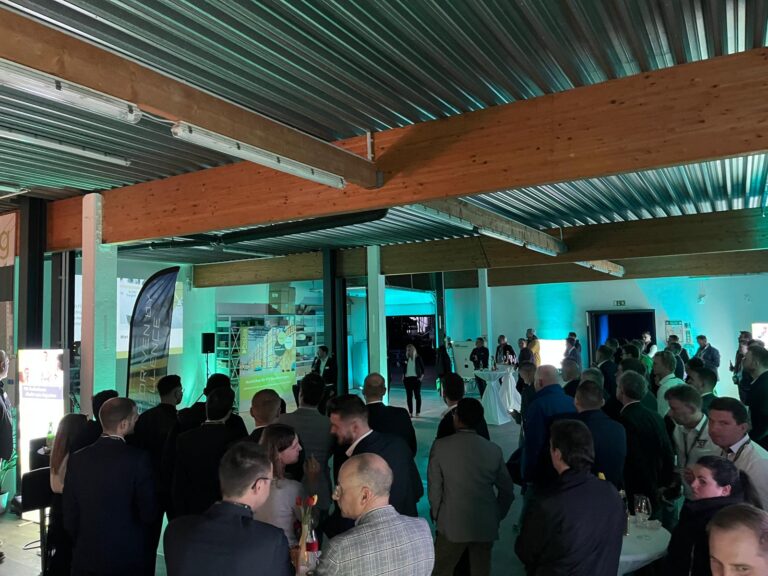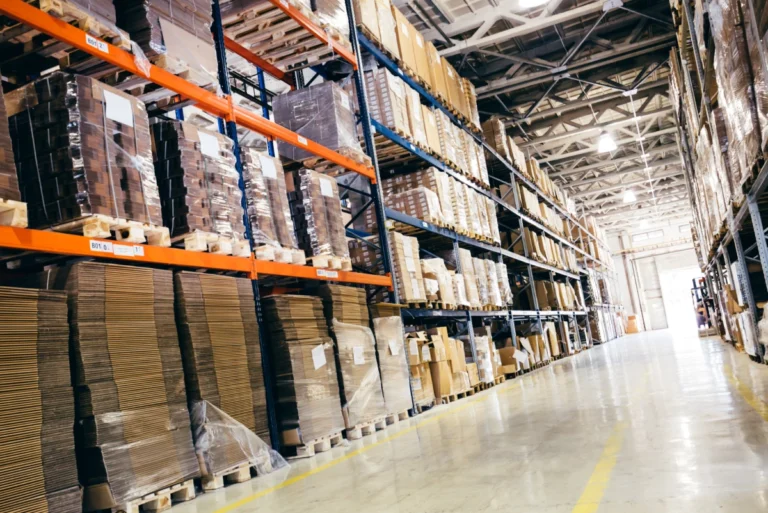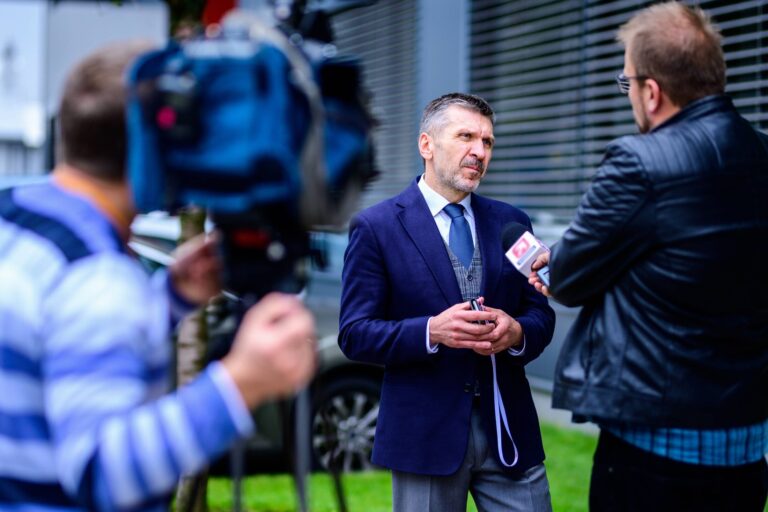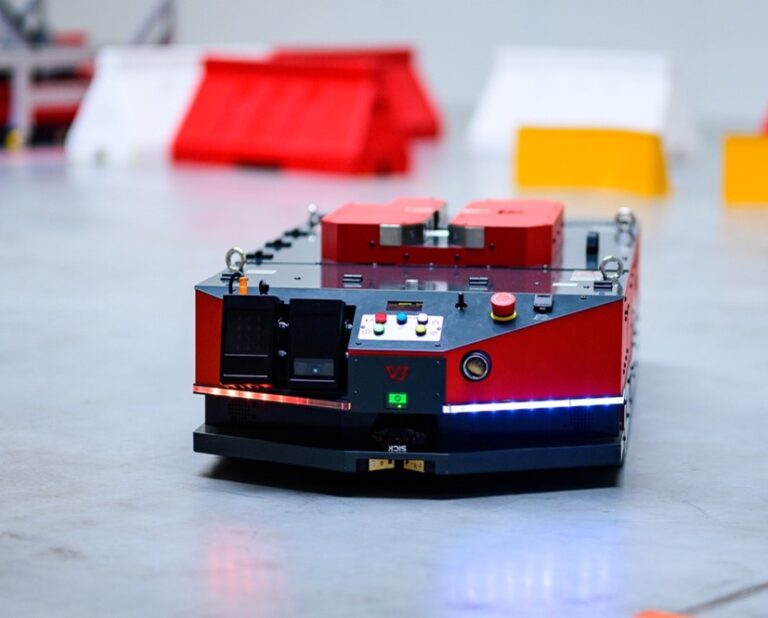This post is also available in:
![]() PL
PL
The term smart factory has permanently entered the language of economy. It’s most often defined in the broader context of Industry 4.0. We decided to demonstrate how the ideas of smart factory and Industry 4.0 are becoming reality before our very eyes. We will do this using the example of VERSABOT implementation in the Faurecia factory in Wałbrzych.
What is a smart factory?
Smart factory is a concept that aims to transform the current understanding and management of the production process. The revolutionary change concerns two areas of factory operation:
- automation of production processes – introduction of cyber-physical systems (CPS), which in practice means programmable machines that can be managed with the use of an app – machines are equipped with electronic systems that enable communication and data exchange, forming the Industrial Internet of Things (IIoT),
- reorganisation of production processes – primarily means shifting away from a linear (conveyor belt) manufacturing process in favour of manufacturing cells, which are supplied with components using smart and autonomous mobile robots (AMRs) – such as VERSABOT 500 and VERSABOT 1500.
VersaBox is an AGV and AMR supplier and knows that the introduction of the smart factory model into everyday industrial manufacturing can be comprehensive and include all production processes or only their selected elements. Implementing the comprehensive smart factory model usually requires building a new factory from scratch. On the other hand, implementation of smart intralogistics based on AMRs is possible in almost all conditions and in already existing industrial facilities. The deployment of VERSABOTS in the Faurecia factory is proof of that.
Faurecia is a specialised manufacturer of car seat systems. The purpose of introducing AMRs was the automation of transport, e.g., of metal elements (car seat frames) from the welding shop to the paint shop. Before the introduction of VERSABOTS, this was done by employees using hand pallet trucks. This was physically exhausting manual labour, which was also fraught with significant accident risk. The implementation of VERSABOTS improved the health and safety standards. There was also an increase in efficiency and fluidity of load flow.
Cyber-physical systems in an enterprise
The solutions developed by VersaBox are an example of a comprehensive cyber-physical system (CPS). Its two main components are smart machines (VERSABOT AMRs) and software (the AUTONOMY@WORK platform). They are a model example of the smart factory concept. VERSABOT robots are networked, autonomous machines that are able to exchange data. The AMR fleet is coordinated by the AUTONOMY@WORK platform. But its capabilities are not limited to just managing a fleet of smart transport robots.
Virtual Factory is an important module of the management software. It enables you to design, model, and even optimise any intralogistic process within a virtual space. Thanks to this program, it’s possible to maximise the benefits of implementing AMRs and significantly reduce the costs of future modernisation of the logistics system.
The most important benefits of industrial process robotisation
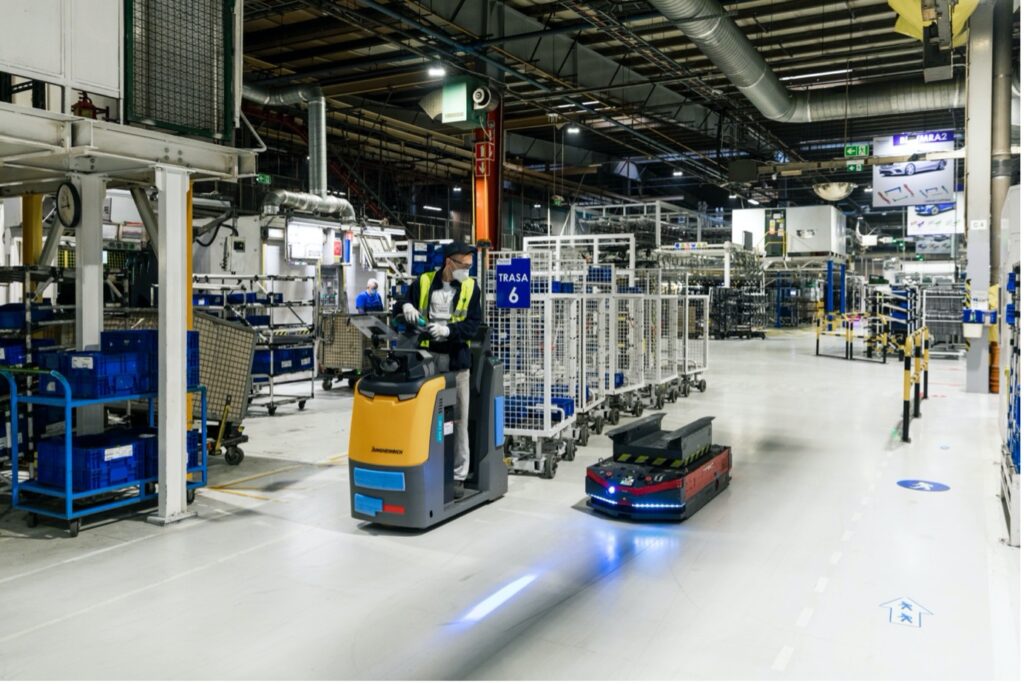
The smart factory and Industry 4.0 concepts are a response to the need to optimise all components of the manufacturing process. Consumers demand goods of ever higher quality that are also personalised, catered to their individual expectations. Market trends are unstable – this season’s hot item might not be popular next year. At the same time, investors pressure companies to maximise profits, which forces them to optimise production costs.
It’s not possible to reconcile all these demands in the traditional model of a manufacturing company. Traditional, linear production processes are too inflexible for an enterprise to react quickly to changing market demands. Retooling traditional assembly lines based on conveyors is expensive and time-consuming. On the other hand, processes that use manual labour, as was the case in the Faurecia factory, can create numerous problems with maintaining the smooth flow of payloads. The main reason for that is the difficulty of recruiting staff for manual labour jobs.
The use of VERSABOT AMRs in the Faurecia factory made it possible to achieve all main manufacturing goals that were defined in the pre-implementation analysis:
- increase in internal transport efficiency – AMRs maximise the available operating time during a shift, which means that they’re much more efficient than forklifts, even though they move more slowly,
- reduction of delivery errors – machines don’t make mistakes and always deliver the right amounts of the right components to the right place,
- genuinely smooth flow of payloads – AMRs don’t make unplanned breaks: the smart robots independently choose optimal routes, avoid obstacles, and tirelessly pursue the goal of maintaining the continuity of supplies to the production line, as well as collecting finished products or empty containers from manufacturing cells,
- continuity of the multi-shift transport process – robots can operate non-stop in a three-shift system, and in the event of robot failure another one immediately takes its place,
- improvement of work safety – VERSABOT robots operate seamlessly in working environments shared with people and other material handling equipment.
Of course, achieving these manufacturing aims translates into accomplishing organisational and business goals. The greatest benefit is the optimisation of labour costs. The introduction of AMRs brings about a return on investment and starts generating profits within two years of implementation. However, the first visible benefits will appear the moment the robots enter the production hall. Smart machines allow for precise planning and budgeting of production plans without the need to take staff shortages into account.
Just those two main benefits improve the company’s competitiveness and business credibility. Industrial manufacturing based on smart intralogistics guarantees greater stability and independence from external factors. In addition, it provides the flexibility necessary to respond to rapid market changes in today’s economy.
Summary
The example of the Faurecia Frames factory demonstrates that the implementation of the smart factory model results in very tangible organisational and economic benefits. More importantly, the positive effects of introducing AMRs can be seen from the very beginning of implementation and you don’t have to wait years for real profits. It’s also worth noting that investing in smart technologies is an element of reducing business risk and improving the company’s credibility in the eyes of potential investors.


